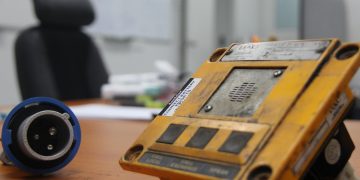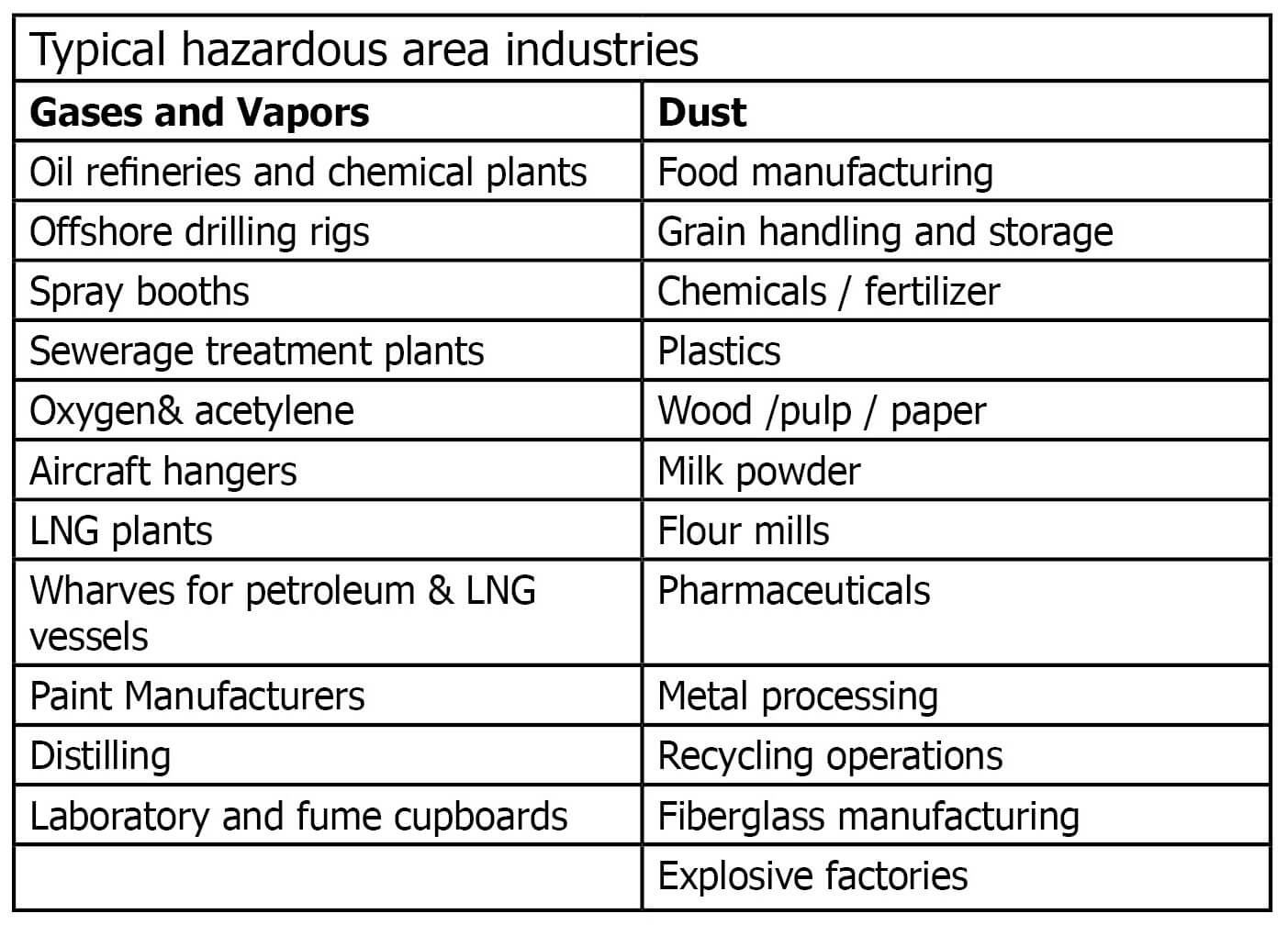Excitement About Roar Solutions
Excitement About Roar Solutions
Blog Article
Our Roar Solutions PDFs
Table of ContentsThings about Roar SolutionsThe smart Trick of Roar Solutions That Nobody is Talking AboutWhat Does Roar Solutions Do?
In order to safeguard installments from a possible explosion an approach of evaluating and identifying a potentially hazardous location is needed. The purpose of this is to ensure the proper choice and installation of devices to inevitably stop an explosion and to guarantee safety of life.
(https://www.cybo.com/AU-biz/roar-solutions)
No equipment needs to be installed where the surface area temperature of the tools is above the ignition temperature of the provided hazard. Below are some common dust harmful and their minimal ignition temperature level. Coal Dust 380C 225C Polythene 420C (melts) Methyl Cellulose 420C 320C Starch 460C 435C Flour 490C 340C Sugar 490C 460C Grain Dust 510C 300C Phenolic Resin 530C > 450C Aluminium 590C > 450C PVC 700C > 450C Soot 810C 570C The likelihood of the hazard being present in a concentration high sufficient to cause an ignition will vary from location to place.
In order to identify this danger an installation is divided right into areas of threat relying on the amount of time the dangerous exists. These areas are described as Areas. For gases and vapours and dirts and fibers there are three zones. Zone 0 Zone 20 A hazardous atmosphere is extremely most likely to be existing and may be existing for lengthy durations of time (> 1000 hours per year) or perhaps continuously Area 1 Area 21 A dangerous ambience is feasible yet unlikely to be existing for lengthy periods of time (> 10 450 C [842 F] A category of T6 means the minimal ignition temperature is > 85 C [185 F] Harmful location electrical tools maybe created for use in higher ambient temperature levels. This would showed on the rating plate e.g. EExe II C T3 Ta + 60C( This means at 60C ambient T3 will not be gone beyond) T1 T1, T2, T3, T4, T5, T6 T2 T2, T3, T4, T5, T6 T3 T3, T4, T5, T6 T4 T4, T5, T6 T5 T5, T6 T6 T6 A T Course ranking of T1 implies the maximum surface temperature level generated by the instrument at 40 C is 450 C. Assuming the linked T Class and Temperature level score for the tools are suitable for the location, you can always make use of an instrument with a more strict Division rating than required for the area. There isn't a clear solution to this question unfortunately. It truly does depend upon the kind of tools and what repair work need to be accomplished. Tools with particular examination procedures that can not be executed in the area in order to achieve/maintain 3rd party score. Must come back to the factory if it is prior to the devices's service. Field Repair Work By Authorised Personnel: Challenging screening might not be needed nonetheless specific treatments may need to be adhered to in order for the equipment to keep its third event ranking. Authorised workers have to be utilized to execute the job correctly Repair have to be a like for like substitute. New element must be taken into consideration as a straight substitute calling for no special screening of the equipment after the repair work is total. Each tool with a hazardous rating should be reviewed independently. These are outlined at a high degree below, however, for more comprehensive info, please refer directly to the guidelines.
Our Roar Solutions Statements
The devices register is a thorough data source of equipment records that includes a minimum collection of areas to recognize each thing's place, technological parameters, Ex classification, age, and environmental information. The proportion of In-depth to Close examinations will certainly be established by the Devices Risk, which is analyzed based on ignition threat (the likelihood of a source of ignition versus the likelihood of a flammable atmosphere )and the unsafe area category
( Zone 0Area 1, or 2). Implementing a robust Risk-Based Examination( RBI )method is important for ensuring conformity and security in taking care of Electric Equipment in Hazardous Locations( EEHA).
The Best Guide To Roar Solutions

In terms of eruptive threat, an unsafe location is an atmosphere in which an explosive atmosphere exists (or might be anticipated to be existing) in quantities that call for unique preventative measures for the building, installment and use tools. hazardous area electrical course. In this short article we check out the challenges dealt with in the workplace, the threat control measures, and the called for competencies to work safely
It is an effect of contemporary life that we make, keep or handle a series of gases or liquids these details that are regarded flammable, and a variety of dirts that are regarded combustible. These substances can, in certain problems, form explosive environments and these can have significant and tragic repercussions. A lot of us recognize with the fire triangular get rid of any one of the 3 components and the fire can not happen, however what does this mean in the context of dangerous locations? When damaging this down right into its simplest terms it is basically: a mix of a particular amount of release or leakage of a particular substance or product, blending with ambient oxygen, and the existence of a resource of ignition.
In a lot of instances, we can do little regarding the levels of oxygen in the air, yet we can have significant influence on resources of ignition, for instance electrical equipment. Harmful locations are documented on the hazardous area classification drawing and are identified on-site by the triangular "EX" indication. Here, amongst other vital details, areas are divided right into 3 kinds depending on the hazard, the likelihood and period that an eruptive ambience will certainly exist; Zone 0 or 20 is regarded one of the most unsafe and Zone 2 or 22 is deemed the least.
Report this page